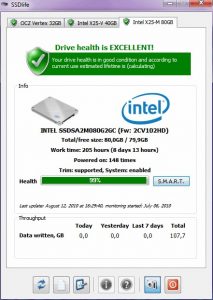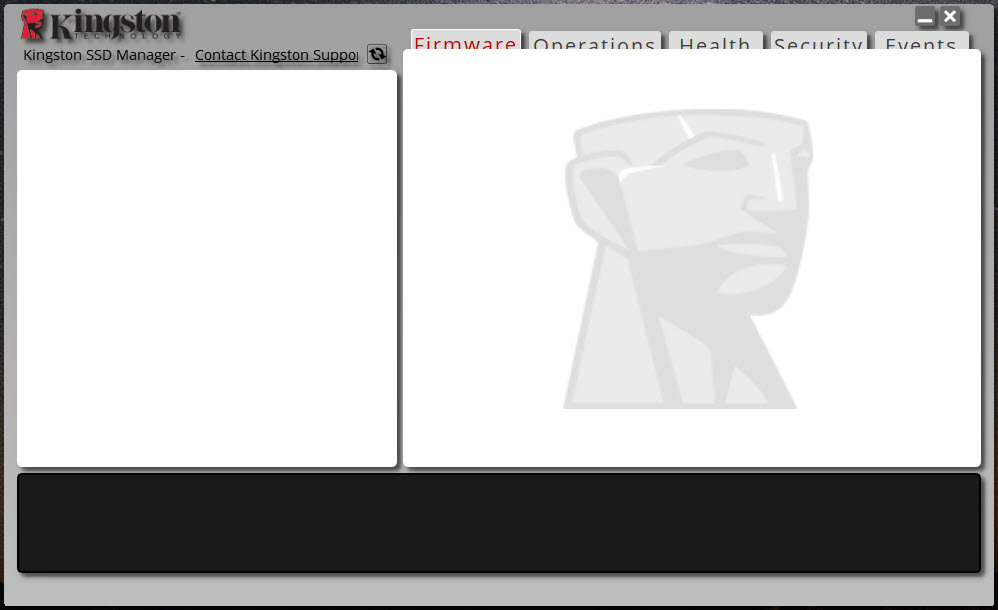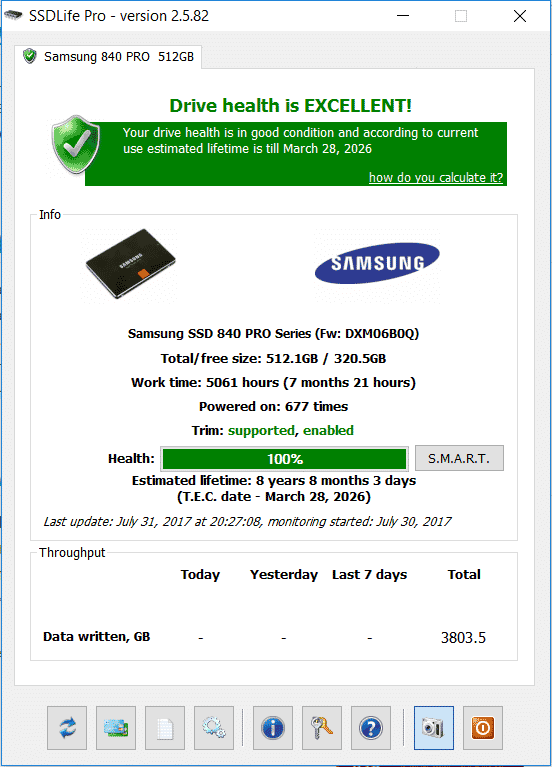

- #Kingston ssd health check tool how to
- #Kingston ssd health check tool software license
- #Kingston ssd health check tool install
- #Kingston ssd health check tool pro
Where sdX is the name of the drive to be tested. To use the smartctl tool, the first thing you will want to do is gather information about the drive, which is done via the command:
#Kingston ssd health check tool pro
SEE: Securing Linux policy (Tech Pro Research) Usage Once the package is installed, you’re ready to go.
#Kingston ssd health check tool install
This can be installed with a single command:ĭo note, the above command will also install libgsasl7, libkyotocabinet16v5, libmailutils5, libntlm0, mailutils, mailutils-common, and postfix. The smartctl utility is a part of the smartmontools package. The required package is found on all the standard repositories, so adjust the installation command to fit your particular distribution of choice. I will be demonstrating with the Ubuntu platform (Ubuntu 17.10 to be exact). Even with that in mind, you can get a good estimation as to the wear and tear on your drives. Because of this, you cannot be certain the number of times your SSD chips have been written to. tools aren’t always up to date with every SSD drive. Of course, how much mileage you get from the command will depend upon what make/model of SSD you employ. With this command, you can get a quick glimpse of your SSD health.

Why? Most of the time, your Linux servers won’t include a GUI with the command line, you can easily make use it by secure shelling into your remote Linux server and run your tests from the terminal. Although a GUI solution exists (GNOME Disks), I highly recommend going with a command line tool for this task. How do you check the health of those drives? As with everything in Linux, there are options. The last thing you want to do is fall victim to that particular end of days. Why? Because, even though solid state drives will dramatically outlast rotating platter drives, they do have a finite lifespan. Homebrew is a popular one, so we’ll use it here.If your data center makes use of Linux machines, one of the administrative tasks you’ll want to undertake is regularly checking the health of the SSD drives used on those machines.

There are different package managers available, and Now you need to install a package manager, which is a set of tools needed to perform tasks like installations and uninstalls.
#Kingston ssd health check tool software license
You need to agree to its software license before you can continue, type your Mac password, and as well as the Terms and Conditions. You canĪfter you download Xcode, head over to the Utilities folder to open it. It has a set of command line tools that your Mac needs before you can install and run Homebrew, which is a prerequisite for running smartmontools. The first thing you need to do is install Xcode, an Apple app for developers.

The worst-case scenario is you’ll need to reinstall macOS in Recovery Mode, which will take some time but will leave all of your files intact. These instructions were created using macOS Big Sur, but they can also be used in macOS Catalina. If something goes wrong, don’t panic. There are so many times I could’ve saved myself some frustration if I was just more careful with my typing. While the procedure isn’t difficult (if I can do it, you certainly can), since you’re dealing with command line entries, you need to pay a little closer attention to what you’re doing than with apps you usually use on the Mac.
#Kingston ssd health check tool how to
In this article, you’ll learn how to set up the Terminal so you can install and run smartmontools. It runs in the Terminal, the command-line interface for the Mac that you’ll find in the Utilities folder inside Applications. It’s not a typical app with an icon that you double-click to launch and menus and windows you navigate. Smartmontools, which taps into the Self-Monitoring, Analysis and Reporting Technology (SMART) system that’s built into SSDs. There is a catch with smartmontools, though. To gain insight into the health of your SSD, you can use a software tool called So even if you have a brand new M1 Mac, you might want to check on your drive’s health from time to time.


 0 kommentar(er)
0 kommentar(er)
